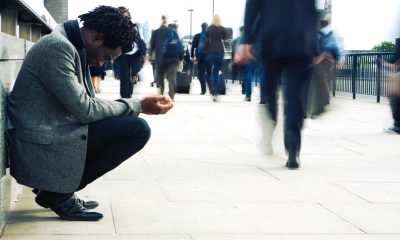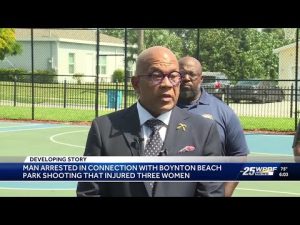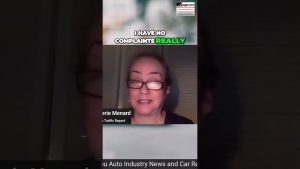National
HBCUs Divided Over Free Community College Plan

Jarvis Christian College President Lester C. Newman is concerned that free community college could hurt private HBCUs. (Courtesy Photo)
By Freddie Allen
NNPA Senior Washington Correspondent
WASHINGTON (NNPA) – Black college educators and supporters are sharply split over whether President Obama’s proposal to offer a free two-year community college education to students making progress toward earning an associate or bachelor’s degree would hurt are harm Historically Black Colleges and Universities (HBCUs).
Lezli Baskerville, president and CEO of the National Association for Equal Opportunity in Higher Education (NAFEO), a nonprofit network of Historically Black Colleges and Universities (HBCUs) and Predominantly Black Institutions (PBIs), including community colleges, said that for students who have a gap in funding or choose to go to a two-year institution and don’t have adequate funding, America’s College Promise would create another opportunity for them.
“We are trying to make sure that students that want to go and get a technical certification or some training to get their foot in the door, can do that,” said Baskerville. “We also want to incentivize and facilitate students who want to get a four-year degree doing that, especially low-income students for whom options are very, very limited.”
Baskerville said that the jury is still out on whether a student would opt to go to a two-year college for free instead of going to an HBCU.
“If they’re going to a two-year institution, they’re going to get a certificate or a two-year degree, something to get them market-ready or entrepreneurship-ready,” explained Baskerville. “If they’re going to a four-year HBCU they’re going because they appreciate the ethos of historic Black colleges that are built on the traditions of the African American community of family, faith, fellowship, service and social justice.”
However, Lester C. Newman, president of Jarvis Christian College in Hawkins, Texas, believes HBCUs will pay a price.
“They are going to suffer,” he said. “Not too many schools can operate with just the third and fourth level, especially four-year institutions that don’t have graduate programs. You don’t get the research dollars that can help sustain you. You rely on students being there from their freshman to their senior year. But if you are going to lose a great portion of those students for the first two years, you really will have to change your model, your business plan.”
Johnny Taylor, president and CEO of the Thurgood Marshall College Fund, an education advocacy group that represents about 300,000 students and 47 member colleges and universities, agrees.
“My fear is a real one and that this is going to significantly, negatively impact private HBCUs and I think it’s going to have some negative impact on public HBCUs,” he said. “Mama and Daddy are going to say, ‘If you can go to community college for free, that’s where you are going the first two years.’ So, what you have essentially done is cut in half the revenue for private HBCUs. Private HBCUs are going to feel this in a way you can’t even imagine.”
Taylor said he supports President Obama’s overall goal of providing free college assistance, but thinks it should be done in a manner that would be less harmful to HBCUs.
The United Negro College Fund (UNCF), which represents private HBCUs, has not issued a statement on the community college proposal.
As educators and HBCU advocates debate whether the program will have a disparate impact on Black schools, Toldson argued that enrollment at HBCUs has already taken a hit, because of state-level policy choices.
Toldson used Southern University in Baton Rouge, La., as an example. Toldson said that when he taught at the school in 2005, there were 10,000 students enrolled and over the last decade that number has dwindled to 6,000. Over the same period, Toldson said that community college attendance increased to about 9,000 students.
But Toldson said that the fall in enrollment at Southern University had more to do with changes in admission requirements that affected all state universities in Louisiana than direct competition from community colleges in the region. Toldson said that new guidelines barred Southern University from admitting students that scored less than 20 on their ACT exams.
“The average ACT score is 16 in Louisiana, so you could imagine how many Black students could not go to Southern because of that change,” said Toldson. “So, they had to go to a community college or whatever college would accept them.”
According to data collected by the ACT program, Black graduating high school seniors scored an average of 17 on the exam in 2014, compared to White students who scored 22.3 on average.
“By 2020, an estimated 35 percent of job openings will require at least a bachelor’s degree and 30 percent will require some college or an associate’s degree,” White House officials said. “Forty percent of college students are enrolled at one of America’s more than 1,100 community colleges, which offer students affordable tuition, open admission policies, and convenient locations.”
Seventy-five percent of the funding for the proposal, called “America’s College Promise” will come from the federal government with participating states contributing the rest of the money needed to cover tuition costs. White House officials estimate that the program will cost the federal government $60 billion over 10 years, if all states participate.
Nearly all of the HBCUs are in states where Republicans control the legislature and the governor’s mansion. Getting them – or the Republican majority in the House and Senate – to buy into President Obama’s vision will likely be an uphill battle.
As President Newman noted, spending on higher education is already being cut by most states.
“Of course, you support any opportunity where people can go to school for free,” he said. “The details are what I am concerned about. I don’t see them adding any money to higher education, just redirecting funds. This program will take away funds from private schools. Any proposal that does that is going to hurt us tremendously.”
Baskerville also noted that going to a two-year institution is not the most direct route for anyone who wants to get a four-year bachelor’s degree.
According to federal statistics, only 7.5 percent of Black students who pursue a two-year associate degree full-time finish within three years and about 40 percent of Black students who earn bachelor’s degrees finish in six years. Those rates plummet when a student is only able to attend part-time, often burdened by work or family obligations.
Ivory Toldson, the deputy director of the White House Initiative on Historically Black Colleges and Universities, said that community colleges currently educate more Black students than any other single sector, partly because of limited financial resources.
“Having a program that allows them to cut that financial barrier altogether to go into an institution that can help prepare them for an associate’s degree or to transfer to a four-year college, I think is a worthwhile program,” said Toldson.
The Journal for Blacks in Higher Education reported that, “Only 34 percent of Black students who took the ACT test were deemed ready for college-level English courses. This is less than half the rate for White students who took the ACT. Only 14 percent of Black ACT test takers were deemed college ready in mathematics compared to 52 percent of White ACT test takers.”
Whether community college students will be less likely to enroll in an HBCU after the first two years in another setting is being hotly debated. Regardless of the outcome, Black colleges are looking at a new reality.
Newman said that even before President Obama’s announcement, Jarvis was studying whether to award students associate degrees upon satisfactory completion of the first two years. Now that examination will be accelerated.
“We’re going to have to change our model,” he explained. “I don’t know if we have to play the associate degree game. We will have a need for greater articulation agreements with those community colleges that get those students.”
Other approaches will also be needed.
Baskerville said NAFEO is already working with The Links Inc., an international professional women’s group, to pair HBCUs with two-year community colleges in their service area in an effort to provide students with the experience of attending a four-year institution as they earn college credits at the local community college.
White House officials hope that taking the costs of tuition off the table for two-years will help to ease some of those burdens, possibly improving graduation rates in the process.
If the president’s plan results in fewer students attending HBCUs, that could have a ripple effect. For example, physicians, dentists and other professionals who attend HBCUs are much more likely to return to Black communities to practice than graduates of non-Black colleges.
Referring to the Obama community college proposal, Newman said, “It’s going to change how we operate in higher education. Whether that’s good or bad, we don’t know yet.”
###
Alameda County
Seth Curry Makes Impressive Debut with the Golden State Warriors
Seth looked comfortable in his new uniform, seamlessly fitting into the Warriors’ offensive and defensive system. He finished the night with an impressive 14 points, becoming one of the team’s top scorers for the game. Seth’s points came in a variety of ways – floaters, spot-up three-pointers, mid-range jumpers, and a handful of aggressive drives that kept the Oklahoma City Thunder defense on its heels.

By Y’Anad Burrell
Tuesday night was anything but ordinary for fans in San Francisco as Seth Curry made his highly anticipated debut as a new member of the Golden State Warriors. Seth didn’t disappoint, delivering a performance that not only showcased his scoring ability but also demonstrated his added value to the team.
At 35, the 12-year NBA veteran on Monday signed a contract to play with the Warriors for the rest of the season.
Seth looked comfortable in his new uniform, seamlessly fitting into the Warriors’ offensive and defensive system. He finished the night with an impressive 14 points, becoming one of the team’s top scorers for the game. Seth’s points came in a variety of ways – floaters, spot-up three-pointers, mid-range jumpers, and a handful of aggressive drives that kept the Oklahoma City Thunder defense on its heels.
One of the most memorable moments of the evening came before Seth even scored his first points. As he checked into the game, the Chase Center erupted into applause, with fans rising to their feet to give the newest Warrior a standing ovation.
The crowd’s reaction was a testament not only to Seth’s reputation as a sharpshooter but also to the excitement he brings to the Warriors. It was clear that fans quickly embraced Seth as one of their own, eager to see what he could bring to the team’s championship aspirations.
Warriors’ superstar Steph Curry – Seth’s brother – did not play due to an injury. One could only imagine what it would be like if the Curry brothers were on the court together. Magic in the making.
Seth’s debut proved to be a turning point for the Warriors. Not only did he contribute on the scoreboard, but he also brought a sense of confidence and composure to the floor.
While their loss last night, OKC 124 – GSW 112, Seth’s impact was a game-changer and there’s more yet to come. Beyond statistics, it was clear that Seth’s presence elevated the team’s performance, giving the Warriors a new force as they look to make a deep playoff run.
#NNPA BlackPress
LIHEAP Funds Released After Weeks of Delay as States and the District Rush to Protect Households from the Cold
BLACKPRESSUSA NEWSWIRE — The federal government has released $3.6 billion in home heating assistance after a delay that left states preparing for the start of winter without the program’s annual funding.

By Stacy M. Brown
Black Press USA Senior National Correspondent
The federal government has released $3.6 billion in home heating assistance after a delay that left states preparing for the start of winter without the program’s annual funding. The Low-Income Home Energy Assistance Program, known as LIHEAP, helps eligible households pay heating and cooling bills. The release follows a shutdown that stretched 43 days and pushed agencies across the country to warn families of possible disruptions.
State officials in Minnesota, Kansas, New York, and Pennsylvania had already issued alerts that the delay could slow the processing of applications or force families to wait until December for help. In Pennsylvania, more than 300,000 households depend on the program each year. Minnesota officials noted that older adults, young children, and people with disabilities face the highest risk as temperatures fall.
The delay also raised concerns among advocates who track household debt tied to rising utility costs. National Energy Assistance Directors Association Executive Director Mark Wolfe said the funds were “essential and long overdue” and added that high arrearages and increased energy prices have strained families seeking help.
Some states faced additional pressure when other services were affected by the shutdown. According to data reviewed by national energy advocates, roughly 68 percent of LIHEAP households also receive nutrition assistance, and the freeze in multiple programs increased the financial burden on low-income residents. Wolfe said families were placed in “an even more precarious situation than usual” as the shutdown stretched into November.
In Maryland, lawmakers urged the Trump administration to release funds after the state recorded its first cold-related death of the season. The Maryland Department of Health reported that a man in his 30s was found outdoors in Frederick County when temperatures dropped. Last winter, the state documented 75 cold-related deaths, the highest number in five years. Rep Kweisi Mfume joined more than 100 House members calling for immediate federal action and said LIHEAP “is not a luxury” for the 100,000 Maryland households that rely on it. He added that seniors and veterans would be placed at risk if the program remained stalled.
Maryland Gov. Wes Moore used $10.1 million in state funds to keep benefits moving, but noted that states cannot routinely replace federal dollars. His administration said families that rely on medical equipment requiring electricity are particularly vulnerable.
The District of Columbia has already mapped out its FY26 LIHEAP structure in documents filed with the federal government. The District’s plan shows that heating assistance, cooling assistance, weatherization, and year-round crisis assistance operate from October 1 through September 30. The District allocates 50 percent of its LIHEAP funds to heating assistance, 10 percent to cooling, 13 percent to year-round crisis assistance, 15 percent to weatherization, and 10 percent to administrative costs. Two percent is used for services that help residents reduce energy needs, including education on reading utility bills and identifying energy waste.
The District’s plan lists a minimum LIHEAP benefit of $200 and a maximum of $1,800 for both heating and cooling assistance. Crisis benefits are provided separately and may reach up to $500 when needed to resolve an emergency. The plan states that a household is considered in crisis if it has been disconnected from energy service, if heating oil is at 5 percent or less of capacity, or if the household has at least $200 owed after the regular benefit is applied.
The District’s filing notes that LIHEAP staff conduct outreach through community meetings, senior housing sites, Advisory Neighborhood Commissions, social media, posters, and mass mailings. The plan confirms that LIHEAP applicants can apply in person, by mail, by email, or through a mobile-friendly online application and that physically disabled residents may request in-home visits.
As agencies nationwide begin distributing the newly released funds, states continue working through large volumes of applications. Wolfe said LIHEAP administrators “have been notified that the award letters have gone out and the states can begin to draw down the funds.”
#NNPA BlackPress
Seven Steps to Help Your Child Build Meaningful Connections
BLACKPRESSUSA NEWSWIRE — Swinging side by side with a friend on the playground. Sharing chalk over bright, colorful sidewalk drawings. Hiding behind a tree during a spirited game of hide-and-seek. These simple moments between children may seem small, but they matter more than we think
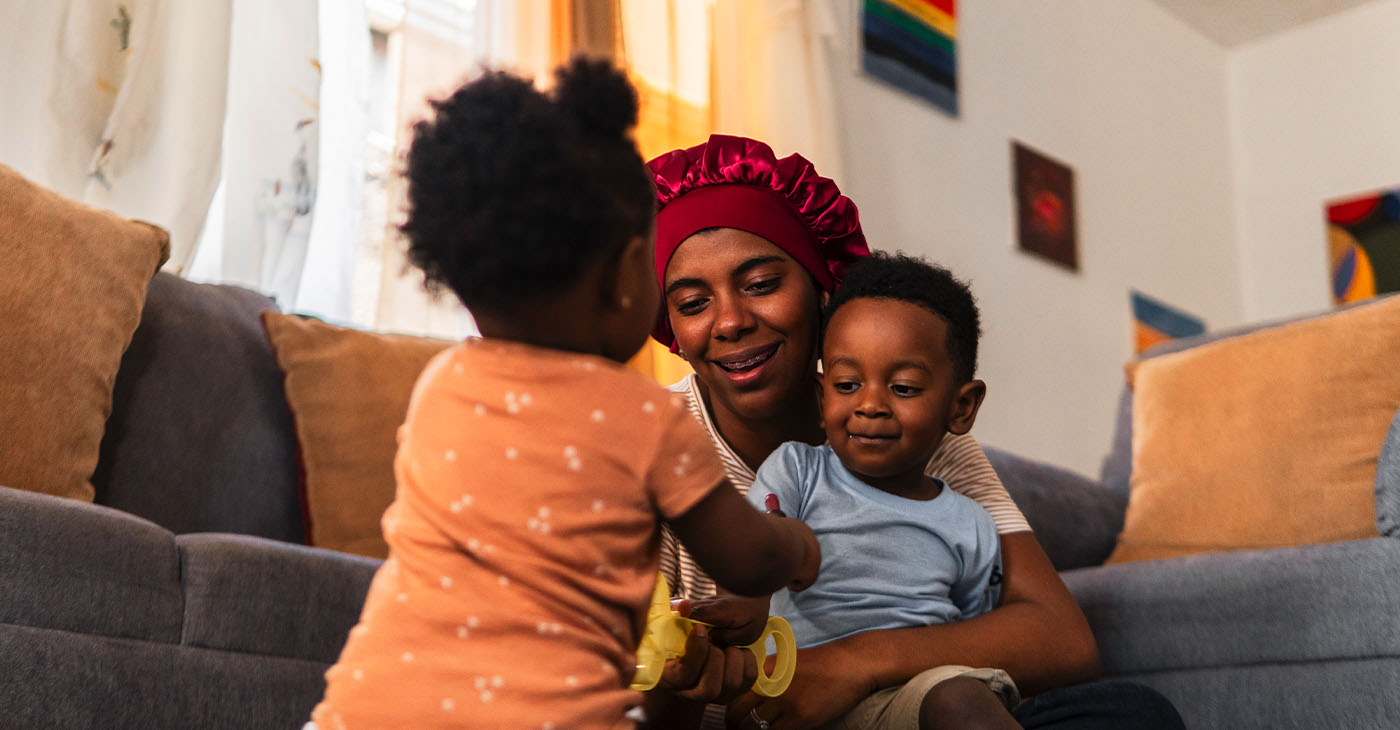
By Niyoka McCoy, Ed.D., Chief Learning Officer, Stride/K12
Swinging side by side with a friend on the playground. Sharing chalk over bright, colorful sidewalk drawings. Hiding behind a tree during a spirited game of hide-and-seek. These simple moments between children may seem small, but they matter more than we think: They lay the foundation for some of life’s most important skills.
Through everyday play, young children begin learning essential social and emotional skills like sharing, resolving conflicts, showing empathy, and managing their emotions. These social skills help shape emotional growth and set kids up for long-term success. Socialization in early childhood isn’t just a “nice-to-have”—it’s essential for development.
Yet today, many young children who haven’t yet started school aren’t getting enough consistent, meaningful interaction with peers. Research shows that there’s a decline in active free play and peer socialization when compared to previous generations.
There are many reasons for this. Children who are home with a parent during the day may spend most of their time with adults, limiting opportunities for peer play. Those in daycare or preschool may have restricted free play, and large classrooms can reduce supervision and social coaching. Some children live in rural areas, are homebound due to illness, have full schedules, or rely on screens to fill their playtime. And for some families, finding other families with young children to connect with isn’t easy.
While these challenges can feel significant, opportunities for connection still exist in every community. Families can take simple steps to help children build friendships, create a sense of belonging, and strengthen social skills. Here are some ideas to get started:
- Storytime sessions at libraries or local bookstores
- Community offerings such as parent-child workshops, art, music, gymnastics, swimming, or sports programs
- Weekly events at children’s museums, which may include art projects, music workshops, or science experiments
- Outdoor exploration, where kids can play with peers
- Local parenting groups that organize playdates and group activities
- Volunteer opportunities where children can participate, such as pet adoption events or packing meals at a food bank
- Classes for kids at local businesses, including hardware, grocery, or craft stores
Some of these community activities are free or low-cost and give kids the chance to build friendships and practice social skills. Parents can also model positive social behavior by interacting with other parents and encouraging their children to play with their peers.
These may seem like small moments of connection, but they can have a powerful impact. Every time your child shares a toy, plays make-believe with peers, or races a friend down the slide, they’re not just playing—they’re learning the skills that build confidence, empathy, and lasting friendships. And it’s good for you, too. Creating intentional opportunities for play also helps you strengthen your own network of parents who can support one another as your children grow together.
-

 Activism3 weeks ago
Activism3 weeks agoOakland Post: Week of November 12 – 18, 2025
-
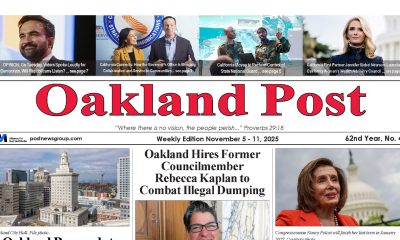
 Activism4 weeks ago
Activism4 weeks agoOakland Post: Week of November 5 – 11, 2025
-

 Activism2 weeks ago
Activism2 weeks agoIN MEMORIAM: William ‘Bill’ Patterson, 94
-

 Activism3 weeks ago
Activism3 weeks agoHow Charles R. Drew University Navigated More Than $20 Million in Fed Cuts – Still Prioritizing Students and Community Health
-

 #NNPA BlackPress3 weeks ago
#NNPA BlackPress3 weeks agoThe Perfumed Hand of Hypocrisy: Trump Hosted Former Terror Suspect While America Condemns a Muslim Mayor
-

 Bay Area3 weeks ago
Bay Area3 weeks agoNo Justice in the Justice System
-

 #NNPA BlackPress3 weeks ago
#NNPA BlackPress3 weeks agoProtecting Pedophiles: The GOP’s Warped Crusade Against Its Own Lies
-

 #NNPA BlackPress2 weeks ago
#NNPA BlackPress2 weeks agoTrump’s Death Threat Rhetoric Sends Nation into Crisis

